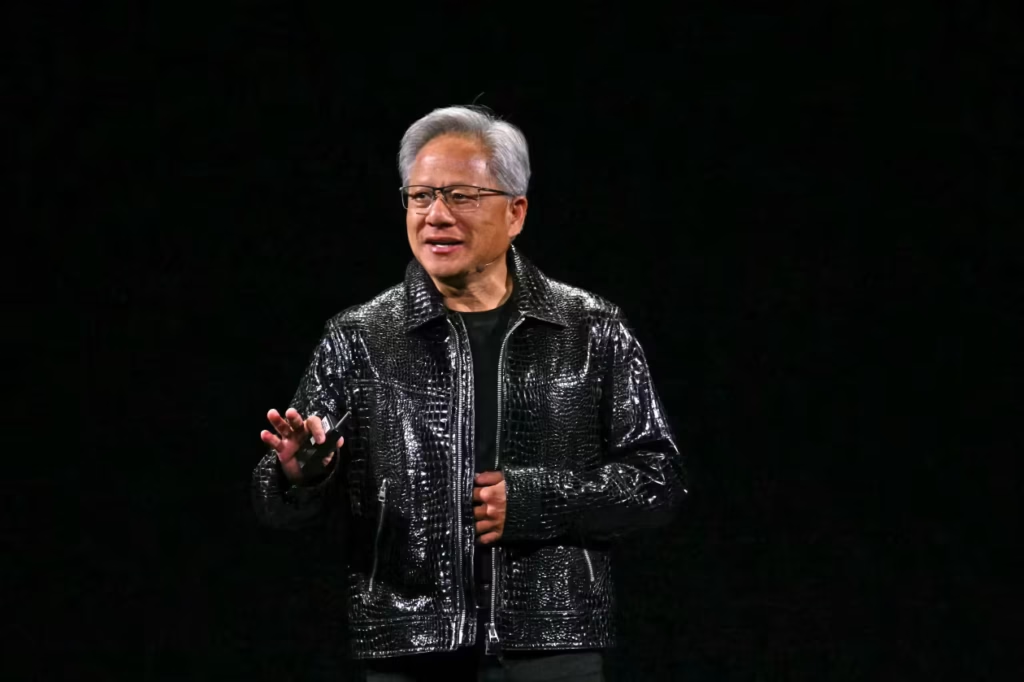According to analysts, Nvidia Corp.’s new technology will facilitate the usage of chips from other firms, which could benefit the company’s operations in the future.
Unveiled on Monday at its GTC Taipei event in Taiwan, the chip maker’s NVLink Fusion will enable users to combine custom silicon from other businesses with Nvidia’s (NVDA) AI infrastructure, including its graphics processing units, in data centers for inferencing and training. To enable data sharing between its GPUs and central processing units, Nvidia created the NVLink technology.
Richard Windsor, the founder of research firm Radio Free Mobile, wrote in a note on Monday that creating space for other chip makers is “a wise move as the AI [data center] market is still very concentrated among a few players,” each of whom has created their own AI chips and has distinct infrastructure needs. Furthermore, the opening “is unlikely to hurt Nvidia’s GPU market share or its margins,” he continued.
At its event ahead of Computex 2025, Nvidia said that its partners, including MediaTek Inc. (TW:2454), Marvell Technology Inc. (MRVL), and Synopsys Inc. (SNPS), are creating bespoke silicon that works with NVLink Fusion. Additionally, Nvidia noted that CPUs from Qualcomm Inc. (QCOM) and Fujitsu Ltd. (JP:6702) will be able to interface with the chip maker’s GPUs in data centers.
“A tectonic shift is underway: for the first time in decades, data centers must be fundamentally rearchitected – AI is being fused into every computing platform,” said a statement by Jensen Huang, the CEO of Nvidia. “NVLink Fusion opens NVIDIA’s AI platform and rich ecosystem for partners to build specialized AI infrastructures.”
Even if a hyperscaler uses some proprietary silicon (CPU or XPU), the new silicon will make it “very, very hard for them not to buy a lot from [Nvidia] since they now offer an infrastructure design on a single Nvidia networking fabric,” according to a note released on Monday by analysts at Melius Research. For the analysts, NVLink Fusion “is a very smart move that keeps Nvidia at the center of your AI Data Center wallet,” as it enables the scaling up of custom silicon to satisfy the growing demand for AI. According to the analysts, it “hints at” Nvidia’s plan to eventually sell more software products.
In a Monday note, Bank of America stated that NVLink “opens up [Nvidia’s] proprietary interconnect and networking tech” to custom accelerators and CPUs from other businesses, which presents an opportunity for Nvidia to increase its total addressable market.
Additionally, Nvidia unveiled its RTX PRO servers, which are equipped with its Blackwell server-edition GPUs and are capable of handling enterprise-size AI workloads and legacy applications, as well as enabling physical AI and multimodal AI inferencing. “Driving the shift from CPU-based systems to efficient GPU-accelerated infrastructure,” according to Nvidia, are the new enterprise servers.
“This is yet another threat for Intel (INTC), whose [data-center] business is already under siege,” Windsor stated. Intel “will now have to fight yet another defensive battle.”
He added: “How much success Nvidia will see with this is unclear at this stage, but if it can do a good job of migrating the legacy to accelerated GPUs cost-effectively, then this is a good proposition for any enterprise looking to start using AI in its systems.”
In the meantime, the Melius analysts said that the RTX PRO servers “could really help drive enterprise AI adoption in the U.S. since it is looking increasingly likely that we could see legislation that allows for 100% depreciation write offs for U.S. Capex.”
According to Windsor, Nvidia is considering “another large revenue opportunity” with its RTX PRO servers, and given Intel’s struggling company, demand is probably going to be high. He noted that pushing the switch from CPUs to GPUs threatens Intel’s legacy x86 architecture.
Neither of these announcements will provide Nvidia with “immediate financial benefit,” but Windsor stated that “in the long run, they will serve to support Nvidia’s market share and augment revenue and profit growth.”





